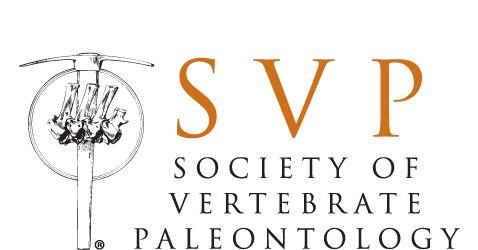Giants of the Lost World: Dinosaurs and Other Extinct Monsters of South America (2016)
- J. Karson Key
- Mar 1, 2017
- 4 min read

Hello, my Mesozoic Maniacs! We’re back! And let’s hope it’s better than the last time “We’re Back” and dinosaurs were used together. We at OAMM didn’t go extinct as many thought—we just had a minor relocation situation to undertake; now, we are in our new home and ready to discuss, analyze, lampoon, praise, and gush over the best and worst marriages of Dinosauria and pop culture!
It’s not our style to review tomes of a purely scientific ilk—a) we aren’t qualified and b) they don’t really fit with our extremely specific niche on the information superhighway. We are more Dr. Alan Grant than Dr. Robert Bakker—however, I hope that, as an avid reader of OAMM, you also recognize that our knowledge does extend a bit beyond those dinosaurs that are stop-motion, CGI, or animatronic in nature. And for our triumphant return, we had the opportunity to review Donald R. Prothero’s Giants of the Lost World: Dinosaurs and Other Extinct Monsters of South America from Smithsonian Books. It was truly a fitting subject for OAMM as the “lost world” concept so brilliantly portrayed in the ultimate of all Dinosauria-pop culture marriages—Sir Arthur Conan Doyle’s The Lost World —was lurking as an underlying sub-text throughout the entire read.
Unlike fictional media—be it books, film, television, puppet shows, or kabuki theater—where the quality can be judged on a myriad of characteristics ranging from narrative velocity to depth of world-building to atheistic appeal, OAMM supports the idea that non-fiction should be judged on the “Hey, Did You Know?” factor. Not familiar with the ol’ “HDYK” factor? Simply put, how many times during the consumption of the material did you look over at your spouse or friend or roommate or grandma and say, “Hey, did you know [insert interesting fact]?” If this is a frequent occurrence—the material scores good marks; if not—you can file it away on the same shelf with the Encyclopedia of Eastern European Spatulas, The Complete History of the Club Sandwich, and Your First Picture Book of the Mating Rituals of the Banana Slug, 1st Edition (Editor’s note: none of these are real books—at least, we don’t think they are. Could we have looked them up to double-check? Sure, but that’s not really our thing). But don’t worry, Giants of the Lost World had me annoying my wife for the majority of the duration of an international flight with facts that I found exciting, informative, and thought-provoking…and she found, well, about as exhilarating as the in-flight dining menu on our Dreamliner 787.

Throughout Giants of the Lost World, Prothero nimbly executes one of the most challenging strategies in non-fiction writing—setting forth an effortless narrative that reads as light and fluffy as a best-selling page turner but, without the reader realizing it, injects us with fascinating knowledge and well-crafted arguments. He opens with the inspiration—for lack of a better term—Doyle’s masterpiece, The Lost World, then hopscotches across a litany of relevant topics—plate tectonics, extinction theories, the trials and tribulations of Darwin aboard the HMS Beagle, and the history of paleontology in South America. He also examines the geological abnormalities of South America that served as the impetus for the “lost world” theories—and led to the isolated evolution of some of the planet’s most remarkable former inhabitants. As you are reading the first few chapters, it feels a bit schizophrenic; but, as Prothero transitions into the main events of the read—the descriptions of the actual dinosaurs and prehistoric beasts of the “lost world”—you realize that his preamble was less a scatter shot salvo and more of coordinated kill shot. Measured and effective.
Hey did you know that…South America was home to the largest sauropod (with adequate fossil records), Argentinosaurus? What about the hotly contested debate over the largest land carnivore—Prothero goes head-to-head with famed paleo-rock star Dr. Nizar Ibrahim and his Spinosaurus by claiming the title for the “lost world’s” Giganotosaurus? How about the terrifying Carnotaurus (featured in another OAMM review for Disney Animal Kingdom’s attraction, Dinosaur)? Did you know about the spike-necked sauropod, Amargasaurus?
From land-bound predatory birds that stood nearly ten feet tall to the bus-sized Titanoboa to the largest turtle that ever roamed the swamp, Stupendyms, to saber-toothed opossums, Giants of the Lost World paints a tapestry of nightmarish oddities and unique biological marvels that are unrivaled throughout history. There is never any doubt as to Prothero’s intention and goal—to provide the reader a detailed image and feel of what one would have expected had they set foot into the “Lost World” throughout different periods of history, equal parts fascination and terror. He is wildly successful in this aim.
As he transitions to the Great American Biotic Interchange (GABI) as well as other manners in which certain species made it to South America over the last 65 million years (Hey, did you know how New World monkeys that are so quintessential to the images of South American biology made it over? What about other staples of current South American life—tapirs, bears, big cats?), Prothero holds our hand and walks us to the present day and the potential of the Sixth Extinction—a poignant close to the thrilling journey through the Lost World of South America.
The Super Official “Of A Mesozoic Mind” Rating (out of a possible 5 Public Domain Triceratops Heads)

Giants of the Lost World: Dinosaurs and Other Extinct Monsters of South America can be purchased at most book retailers including Barnes & Noble and Amazon.













Comments